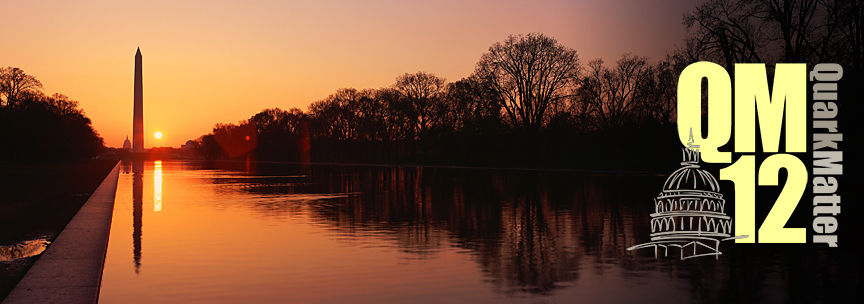Dong Ho Moon
(Korea University (KR))
14/08/2012, 14:15
Heavy flavor and quarkonium production
Oral Presentation
CMS has measured the nuclear modification factors of prompt J/psi in PbPb collisions at sqrt(sNN) = 2.76 TeV. For prompt J/psi with relatively high pT (6.5 < pT < 30 GeV/c), a strong, centrality-dependent suppression is observed in PbPb collisions, compared to the yield in pp collisions scaled by the number of inelastic nucleon-nucleon collisions. During the 2011 data taking period the data...
Roberta Arnaldi
(Universita e INFN (IT))
14/08/2012, 14:35
Oral Presentation
ALICE is the LHC experiment dedicated to the study of heavy ion collisions. The main purpose of ALICE is to investigate the properties of a new state of deconfined nuclear matter, the Quark Gluon Plasma. Quarkonium measurements will play a crucial role in this investigation. In particular, the sequential suppression of the quarkonium states by color screening has long being suggested as a...
Peter Petreczky
(BNL)
14/08/2012, 14:55
Oral Presentation
We calculate different types of Wilson loops of temporal size
t < 1/T at non-zero temperatures on the lattice using Highly Improved
Staggered Quark (HISQ) action and temporal extent Nt=8 and 12.
Unlike other static correlators which go around the periodic
boundary these Wilson loops are not related to the free energy
of static quark anti-quark pair. Therefore from the analysis of...
Darren McGlinchey
(F)
14/08/2012, 15:15
Oral Presentation
The idea of using heavy quarkonia production as a direct probe of the screening length in the quark gluon plasma (QGP) has been around for over two decades. Suppression of quarkonia production in heavy ion collisions has been measured at the SPS, RHIC, and the LHC, including new measurements of $\Upsilon(1S+2S+3S)$ production in Au+Au collisions by PHENIX. However, a full understanding of...
Barbara Trzeciak
(Warsaw University of Technology)
14/08/2012, 15:35
Oral Presentation
The suppression of quarkonia production in high energy nuclear collisions relative to proton-proton collisions, due to the Debye screening of the quark-antiquark potential, was proposed as a signature of the formation of Quark-Gluon Plasma. However, there are other effects that may affect the observed quarkonia production, such as cold nuclear matter effects, final state nuclear absorption and...
Ralf Rapp
(Texas A&M University)
14/08/2012, 15:55
Heavy flavor and quarkonium production
Oral Presentation
We employ a kinetic rate-equation approach in a thermally expanding medium to compute the suppression and regeneration of quarkonia in heavy-ion collisions [1]. The in-medium properties of quarkonia figuring into the rate equation (widths, binding energies and heavy-quark masses) are constrained by euclidean correlators from lattice QCD. Input cross sections for heavy quarks and quarkonia, as...
